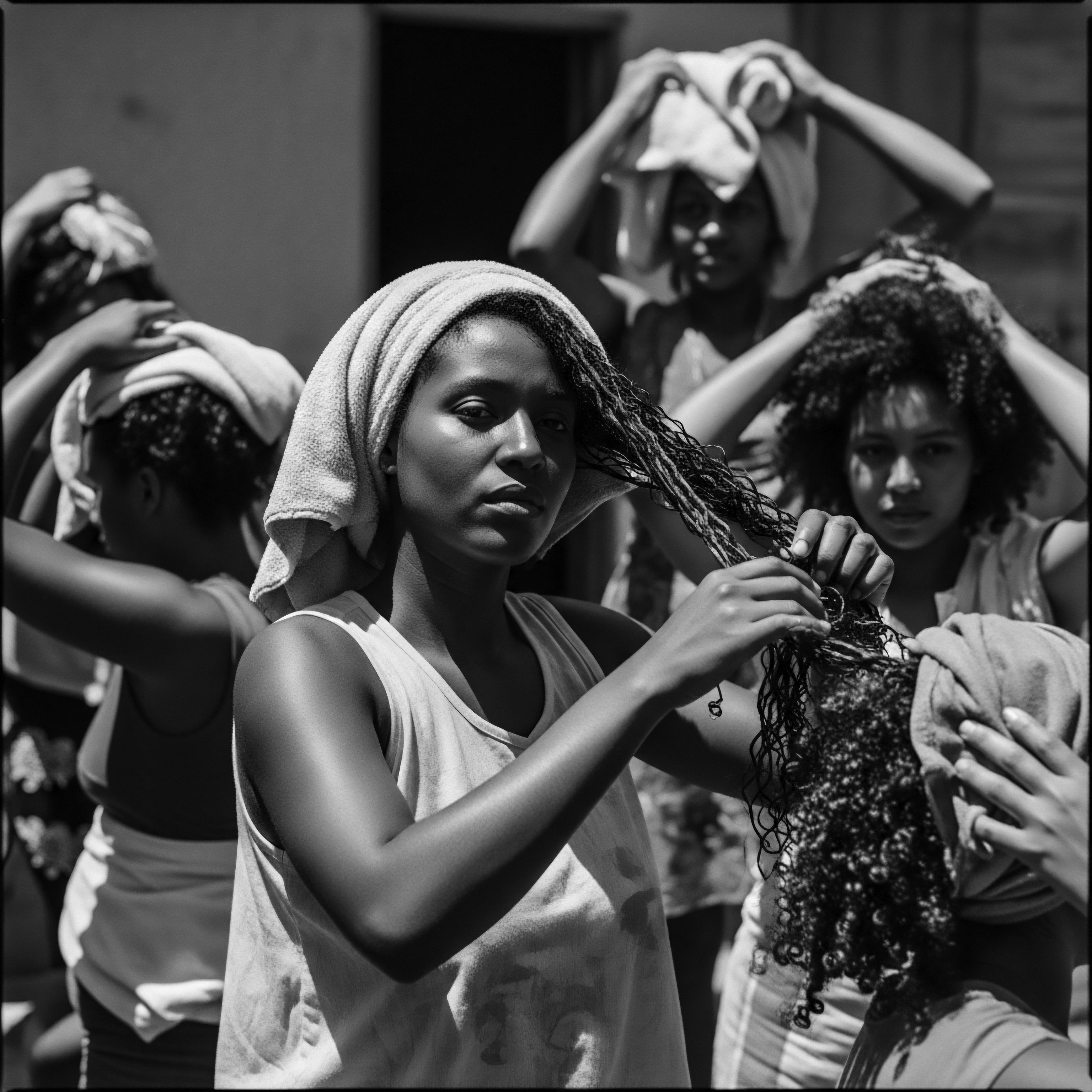
Fundamentals
The very concept of Hair Care Equity emerges from a long, winding historical path, one deeply interwoven with the experiences of textured hair, particularly within Black and mixed-race communities. At its elemental core, this term signifies the fair and just distribution of resources, opportunities, and respect in all matters pertaining to hair care. It extends beyond mere access to products or services; rather, it encompasses the recognition and validation of diverse hair textures, care practices, and the rich cultural heritages from which they spring.
Hair Care Equity demands a world where every coil, every kink, every strand is seen not through a lens of imposed standards, but through the inherent beauty and ancestral wisdom it embodies. It speaks to a collective commitment to dismantle historical inequities and societal biases that have long burdened those with hair diverging from Eurocentric norms.
Consider the profound significance of hair in ancient African societies. It was not merely a cosmetic adornment. Hairstyles conveyed intricate messages about one’s lineage, social standing, age, marital condition, spiritual beliefs, and even tribal affiliation. For instance, among the Mende, Wolof, Yoruba, and Mandingo tribes of West Africa, specific hairstyles acted as a visual lexicon, signaling identity within the community (Byrd and Tharps, 2002).
This intricate communication system meant that hair care was an essential ritual, a communal gathering often performed by close relatives, strengthening familial bonds and transmitting cultural knowledge through generations (Akanmori, 2015; Khumbula, 2024). It was a sacred practice, a connection to the divine, where a well-maintained coiffure indicated not only social refinement but also spiritual alignment (Omotoso, 2018).
The importance of hair in Black culture, even today, traces back to these ancestral roots. Grooming was highly esteemed, and failing to attend to one’s hair was a mark of poor social comportment, acceptable only during periods of sorrow (Sherrow, 2006). This deep-seated connection to hair as a marker of identity and spiritual well-being highlights the profound disruption caused by the transatlantic slave trade.
Enslaved Africans, forcibly transported to the “New World,” endured the dehumanizing act of having their heads shaved, an intentional effort to strip them of their cultural identity and sever their ancestral ties (Byrd and Tharps, 2002; Odele Beauty, 2021; WhiteLotusHairStudio, 2024). This act marked the beginning of a long struggle for Hair Care Equity, as the very rituals that provided meaning and connection were violently suppressed.
Hair Care Equity, at its foundation, is the just affirmation of all hair textures, particularly coily and kinky strands, acknowledging their profound historical and cultural importance.
The roots of Hair Care Equity extend into the very elemental biology of hair. Textured hair, with its unique helical structure, responds to moisture, tension, and environmental factors in ways distinct from straighter strands. Understanding this inherent biological difference is foundational to providing effective care and, by extension, achieving equity.
Ignoring these biological truths in favor of a universal, often Eurocentric, standard of hair leads to inadequate products, misinformed practices, and ultimately, a perpetuation of harm. Our commitment to Hair Care Equity necessitates a scientific inquiry that respects and prioritizes the specific needs of textured hair, recognizing that ancestral practices often held profound, albeit uncodified, scientific wisdom about these very needs.

Ancient Echoes of Care
Pre-colonial African societies developed sophisticated hair care systems that were intimately tied to their environments and communal life. These practices were a holistic endeavor, integrating local botanicals, natural emollients, and skilled artistry.
- Natural Ingredients ❉ Communities across Africa utilized indigenous plants, oils, and clays to cleanse, condition, and protect hair. Shea butter, sourced from the karite tree, was (and remains) a cornerstone for its deeply moisturizing properties. Various plant extracts and animal fats served as vital components for scalp health and strand vitality.
- Communal Rituals ❉ Hair dressing was often a prolonged, multi-person activity, fostering intergenerational learning and social cohesion. Mothers taught daughters, elders shared wisdom, and stories flowed as hands worked together, creating intricate styles that could take hours or even days to complete (Khumbula, 2024; WhiteLotusHairStudio, 2024). This collective act of care solidified bonds and passed down ancestral knowledge.
- Tool Innovation ❉ Early African communities fashioned combs and picks from natural materials such as wood, bone, and metal to detangle and style hair (Salford Students’ Union, 2024). These tools were specifically designed to navigate the unique characteristics of textured hair, demonstrating an early understanding of biomechanical needs.
These traditions underscore a historical understanding of hair care that was inherently equitable within its cultural context. Everyone possessed the knowledge, tools, and community support to maintain their hair in ways that affirmed their identity and promoted health. The systematic disruption of these practices during periods of enslavement and colonialism created a void, forcing adaptation to unfamiliar standards and scarcity of appropriate resources, thereby initiating the long struggle for what we now identify as Hair Care Equity.

Intermediate
Moving beyond the foundational comprehension, Hair Care Equity, at an intermediate level, involves a critical examination of the historical forces that distorted perceptions of textured hair and necessitated a deliberate reclamation of its worth. The transatlantic slave trade marked a cataclysmic rupture, severing ancestral connections and imposing foreign beauty ideals. Upon arrival in the “New World,” the systematic shaving of enslaved Africans’ heads served as a brutal act of identity erasure, a deliberate stripping away of a vital cultural marker (Odele Beauty, 2021). This act initiated a long process where Black hair was systematically devalued, often described disparagingly as “woolly” (WhiteLotusHairStudio, 2024), and contrasted with European hair textures deemed “good hair” (ResearchGate, 2024; Scholar Commons, 2021).
The subjugation extended beyond forced shaving. Laws, such as the Tignon Laws enacted in Louisiana in 1786, specifically targeted free Black women. These laws mandated that free women of color cover their hair with a headwrap, a “tignon,” if they wore elaborate hairstyles that might draw attention (JSTOR Daily, 2019; Odele Beauty, 2021; Wikipedia, 2023). This legislation was not merely about modesty; it was a deliberate, legal mechanism to enforce social hierarchy, asserting that these women were closer in status to enslaved people than to white women, regardless of their free status (Don’t touch my hair!, 2022; Wikipedia, 2023).
Such historical policies directly illustrate a profound lack of Hair Care Equity, as they actively denied the right to self-expression through hair and imposed punitive measures for its display. The resilience of these women, who transformed the mandated tignons into ornate, defiant statements, speaks volumes about the inherent power of hair as a symbol of identity and resistance (Odele Beauty, 2021; Don’t touch my hair!, 2022).
The Tignon Laws illustrate how historical legal frameworks actively dismantled Hair Care Equity by controlling the self-expression of free Black women through their hair.
The legacy of these historical impositions continues to influence contemporary perceptions and practices. The pressure to conform to Eurocentric beauty standards led to the widespread adoption of chemical straighteners and hot combs, tools that often compromised the health of textured hair in pursuit of societal acceptance and economic opportunity (African American Registry, 2024; JSTOR Daily, 2019). This shift created a hair care market that historically underserved textured hair, often promoting products that caused damage while neglecting the distinct needs of coils and kinks. Understanding Hair Care Equity at this stage involves acknowledging the deeply ingrained biases that shape the market, the media, and individual self-perception.
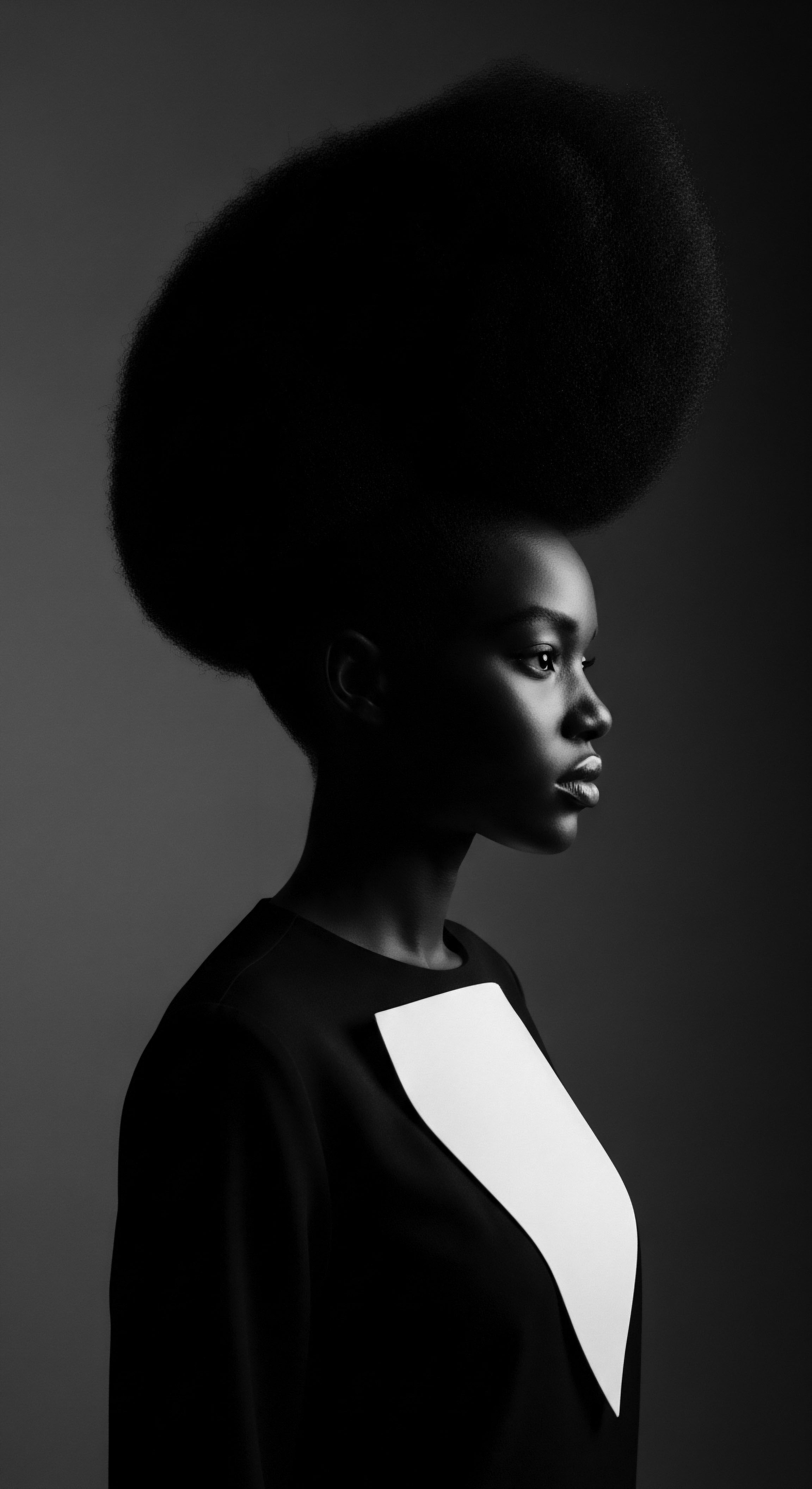
The Tender Thread ❉ Community and Resilience
Despite profound historical assaults, communities of textured hair have continuously woven threads of resilience and shared knowledge. The traditional communal aspect of hair care, where stories and wisdom passed between generations, persisted even through times of immense adversity.
- Kitchen Beauty Shops ❉ Post-slavery, when professional opportunities were scarce and mainstream salons catered predominantly to European hair, “kitchen beauty shops” emerged within Black communities (African American Registry, 2024). These informal, home-based establishments became vital hubs, providing culturally attuned care and fostering spaces for communal gathering, economic independence, and the exchange of hair wisdom.
- Underground Innovations ❉ Enslaved people, deprived of traditional tools, innovated with whatever materials were available, using animal fats and plant extracts to moisturize and protect their hair (Salford Students’ Union, 2024). Braiding patterns also served as a means of communication, with some historians suggesting that specific styles could even map escape routes for those seeking freedom, sometimes with seeds woven into the hair for sustenance (Odele Beauty, 2021; Salford Students’ Union, 2024). This ingenuity highlights how hair care transcended aesthetics, becoming a tool for survival and resistance.
- Cultural Continuity through Style ❉ Even when forced to adopt certain appearances, the spirit of African hair artistry endured. Braids, plaits, and cornrows, ancient styles originating in Africa, continued to be practiced in the diaspora, evolving and adapting while maintaining a link to ancestral traditions (Akanmori, 2015). This continuity demonstrates an unyielding commitment to cultural heritage through hair.
The emergence of the “Black is Beautiful” movement in the 1960s marked a powerful turning point, encouraging individuals to embrace their natural hair texture as a statement of pride and political defiance (JSTOR Daily, 2019; Odele Beauty, 2021; ResearchGate, 2024; Scholar Commons, 2021). This movement consciously re-centered African beauty standards and demanded recognition for the intrinsic beauty of textured hair. This period signifies a collective striving for Hair Care Equity, not just through legal reform, but through a profound shift in self-perception and cultural affirmation.
The journey towards Hair Care Equity necessitates recognizing that hair is not merely a collection of strands but a living archive, carrying stories, histories, and resilience within its very structure. It is a profound aspect of identity, and its care extends to physical well-being, mental fortitude, and communal belonging.
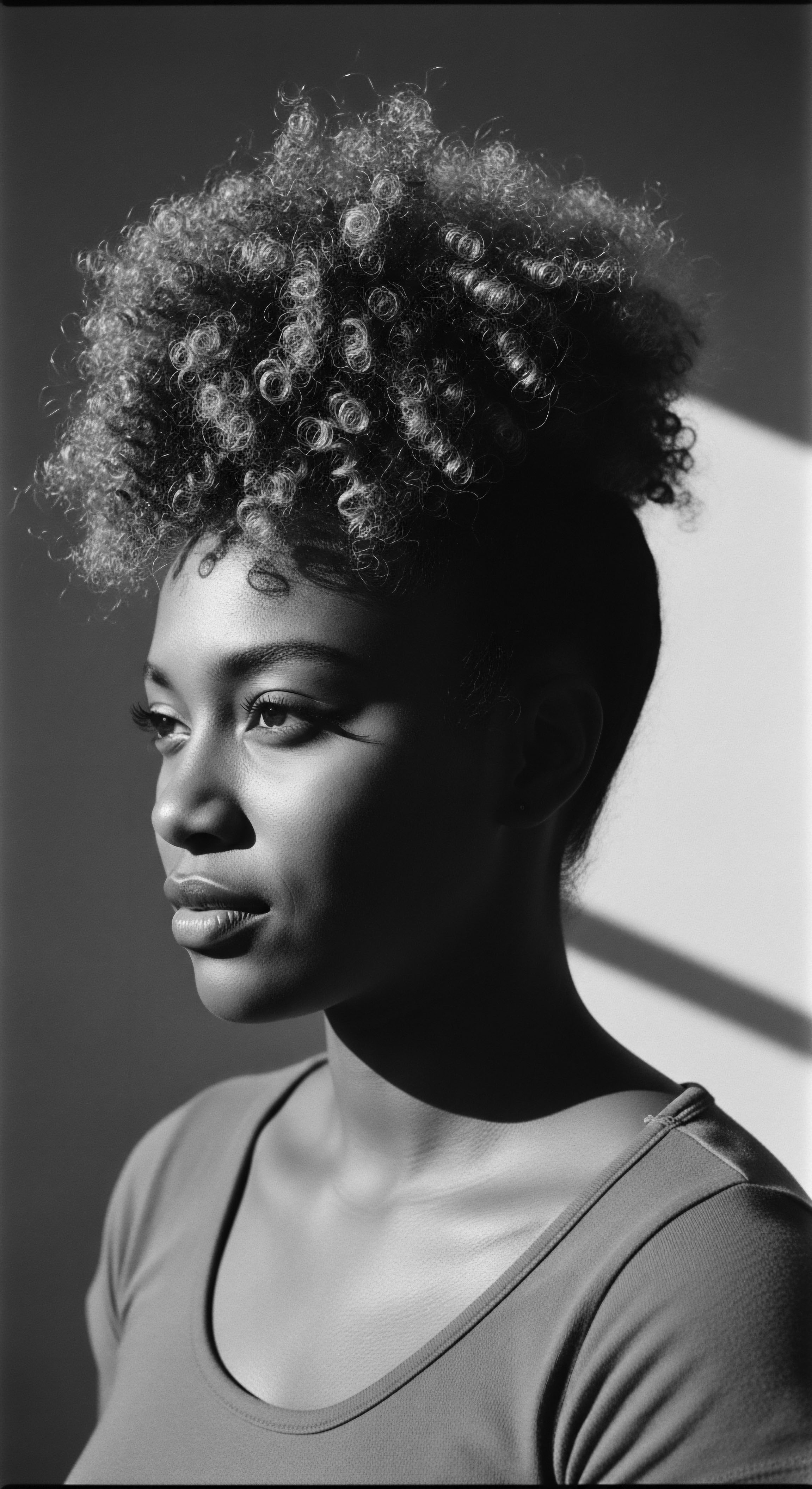
Academic
The academic understanding of Hair Care Equity extends far beyond rudimentary definitions, proposing a multifaceted concept encompassing historical, sociological, physiological, psychological, and economic dimensions. It is a framework for analyzing and addressing the systemic disparities and prejudices that have historically marginalized textured hair, particularly within Black and mixed-race communities. This comprehensive framework acknowledges that the valuation and treatment of hair are not arbitrary but are deeply embedded in power structures, colonial legacies, and enduring beauty hierarchies (ResearchGate, 2024).
Hair Care Equity, therefore, refers to the ongoing pursuit of justice where individuals with textured hair possess equitable access to appropriate products, culturally competent services, and, most critically, the freedom from discrimination based on their natural hair state or chosen protective styles. It signifies a societal imperative to decolonize beauty standards, promote hair wellness holistically, and recognize hair as an indelible marker of identity and a site of enduring cultural heritage.
From an academic lens, the historical context of Hair Care Equity is indispensable. Pre-colonial African civilizations regarded hair with immense reverence, associating specific styles with markers of social standing, age, marital status, tribal affiliation, and spiritual connection (Akanmori, 2015; Khumbula, 2024; Odele Beauty, 2021; Omotoso, 2019). The precise arrangement of braids or the careful placement of adornments could communicate complex narratives about an individual’s life journey or their community’s collective history (Khumbula, 2024; Odele Beauty, 2021).
This cultural reverence was systematically disrupted during the transatlantic slave trade, where the forced shaving of heads served as an early, brutal act of cultural annihilation, stripping individuals of their identity and connection to ancestral traditions (Byrd and Tharps, 2002; Odele Beauty, 2021). This dehumanization, coupled with the imposition of Eurocentric beauty ideals, laid the groundwork for deep-seated biases against textured hair.
Hair Care Equity fundamentally recognizes hair as a profoundly racialized and politicized characteristic, where its denial directly impacts mental and social well-being within Black communities.
A particularly stark illustration of this historical inequity manifests in the Tignon Laws, enacted in colonial Louisiana in 1786. These edicts, driven by racial anxieties and a desire to enforce rigid social hierarchies, mandated that free women of color, who had begun to wear elaborate and culturally rich hairstyles, cover their hair with a tignon (headwrap) in public (JSTOR Daily, 2019; Odele Beauty, 2021; Wikipedia, 2023). This was not merely a matter of dress code; it was a legislative attempt to visually subjugate and differentiate free Black women from white women, undermining their burgeoning social standing and expressions of cultural identity (Don’t touch my hair!, 2022). The very act of wearing one’s hair openly and artfully, a practice deeply rooted in ancestral African traditions, became a defiant political statement in response to such oppressive regulations (Odele Beauty, 2021).
This case precisely illustrates how the state, through legislation, actively denied Hair Care Equity by targeting a bodily expression inextricably linked to racial and cultural identity. The resistance of these women, who transformed the mandated tignons into vibrant, adorned statements of protest, speaks to the resilience of cultural heritage in the face of systemic oppression (Odele Beauty, 2021; Don’t touch my hair!, 2022). This historical example underscores the deep, enduring connection between hair, power, and the struggle for equity within diasporic communities.
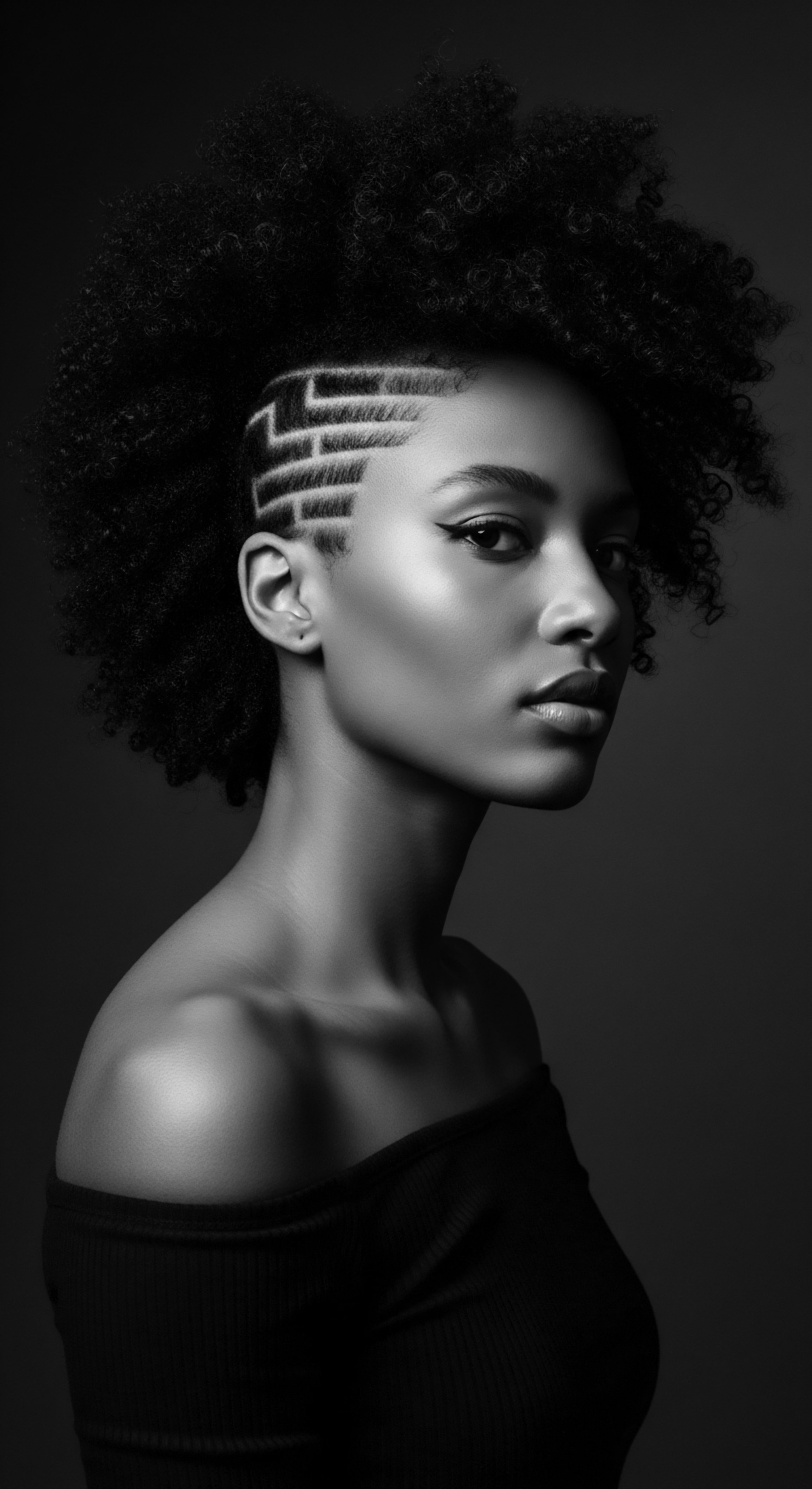
The Unbound Helix ❉ Biology, Identity, and Societal Impact
The physical characteristics of textured hair – its helical structure, density, and growth patterns – differentiate it significantly from straighter hair types. Scientifically, these unique attributes mean textured hair requires distinct care regimens, product formulations, and styling techniques to maintain its health and integrity. Without this understanding, conventional hair care approaches often lead to dryness, breakage, and damage, inadvertently reinforcing negative perceptions of textured hair as “difficult” or “unmanageable” (African American Registry, 2024; ResearchGate, 2024). True Hair Care Equity necessitates a scientific literacy that extends to the nuanced biology of textured hair, ensuring that research, product development, and professional training adequately address its specific needs.
The psychological toll of hair discrimination is a critical component of Hair Care Equity. Studies show that negative biases against Black natural or textured hair styles are pervasive in contemporary society (ResearchGate, 2024; Oxford Academic, 2023). This bias manifests as negative stereotypes, microaggressions, and outright discrimination in educational and professional settings (Walden University Research, 2025; Economic Policy Institute, 2023). For instance, a 2020 Duke University study found that Black women with natural hairstyles were perceived as less professional and less competent, and were less likely to be recommended for job interviews than candidates with straight hair (Don’t touch my hair!, 2022; Odele Beauty, 2021; Economic Policy Institute, 2023).
Such experiences can lead to significant psychological distress, impacting self-esteem, identity development, and overall well-being (Walden University Research, 2025). The continuous pressure to conform to Eurocentric beauty standards often compels individuals to alter their hair, sometimes at the expense of its health, to avoid social or economic repercussions (Economic Policy Institute, 2023; Don’t touch my hair!, 2022).
Hair Care Equity, therefore, becomes a matter of public health and social justice. The Creating a Respectful and Open World for Natural Hair (CROWN) Act, passed in several U.S. states and debated at the federal level, represents a legislative stride towards codifying protections against hair-based discrimination (Economic Policy Institute, 2023; Wikipedia, 2023).
This act acknowledges that discrimination based on hair texture or style, when associated with race, constitutes racial discrimination, recognizing hair as an inextricably intertwined cultural characteristic (JSTOR Daily, 2019; Economic Policy Institute, 2023). The movement supporting the CROWN Act is a contemporary manifestation of the long fight for Hair Care Equity, aiming to ensure that individuals are not penalized for wearing their hair in its natural state or in styles reflective of their heritage.
| Historical Period Pre-Colonial Africa (c. 15th century) |
| Manifestation of Inequity Hair as social/spiritual marker, knowledge shared freely. |
| Response/Advocacy Towards Equity Inherent equity through communal practice and shared wisdom. |
| Historical Period Transatlantic Slave Trade (c. 15th-19th century) |
| Manifestation of Inequity Forced shaving, devaluation of textured hair, loss of ancestral practices. |
| Response/Advocacy Towards Equity Underground care practices, use of headwraps for protection and coded communication (Salford Students' Union, 2024). |
| Historical Period Post-Slavery/Jim Crow Era (19th-20th century) |
| Manifestation of Inequity Tignon Laws, pressure to straighten hair for social acceptance, "kitchen beauty shops" emerge. |
| Response/Advocacy Towards Equity Adaptation of styles, development of Black-owned hair care businesses (e.g. Madam C.J. Walker), informal community support networks (African American Registry, 2024). |
| Historical Period Civil Rights/Black Power Era (1960s-1970s) |
| Manifestation of Inequity Afro becomes political statement, "Black is Beautiful" movement challenges Eurocentric norms. Legal cases emerge, e.g. Jenkins v. Blue Cross (JSTOR Daily, 2019). |
| Response/Advocacy Towards Equity Conscious embrace of natural hair, formation of collective identity, legal challenges against discrimination (JSTOR Daily, 2019; ResearchGate, 2024). |
| Historical Period 21st Century (Natural Hair Movement & CROWN Act) |
| Manifestation of Inequity Continued workplace/school discrimination, mental health impacts. |
| Response/Advocacy Towards Equity Global natural hair movement, social media activism, legislative efforts (CROWN Act) to outlaw hair discrimination (Economic Policy Institute, 2023; Wikipedia, 2023). |
| Historical Period This timeline reveals a continuous struggle against imposed beauty standards, marked by both oppression and profound resilience, underscoring the enduring significance of Hair Care Equity for those with textured hair. |
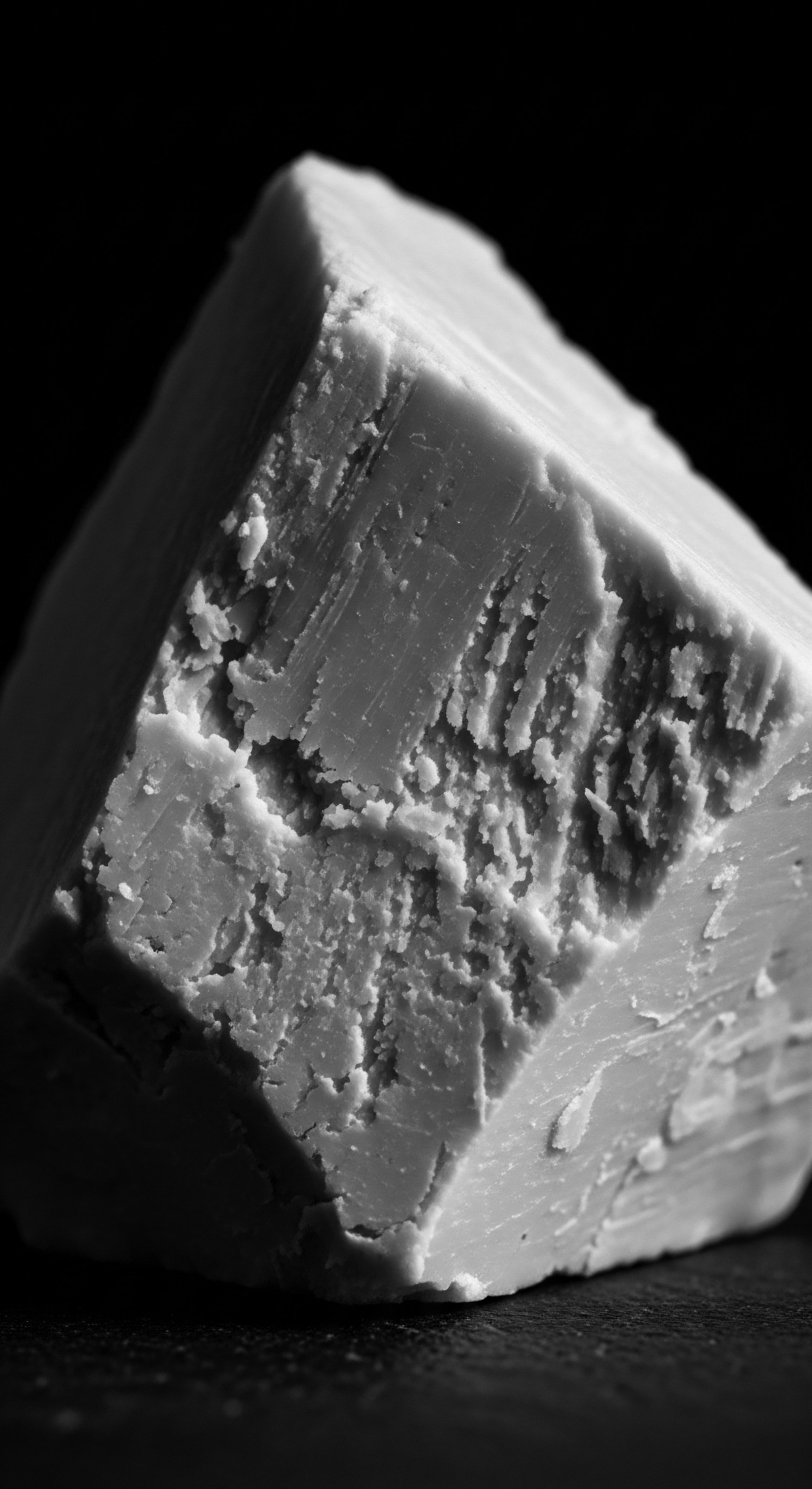
Interconnected Incidences and Outcomes
The lack of Hair Care Equity ripples through various societal spheres, impacting not only individual well-being but also collective cultural expression and economic opportunities. In academic discourse, this is often examined through the lens of intersectionality, recognizing that hair discrimination is not isolated but intertwines with racial, gender, and class oppressions (Walden University Research, 2025). The devaluation of textured hair, for example, has historically influenced the underrepresentation of Black individuals in certain professions or leadership roles, creating barriers to advancement based on mutable physical characteristics (Economic Policy Institute, 2023; ResearchGate, 2024).
The economic implications of Hair Care Equity are profound. The historical pressure to conform to straight hair ideals fueled a multi-billion-dollar industry of relaxers and straightening tools, often at the expense of hair health (JSTOR Daily, 2019). As the natural hair movement gains momentum, a corresponding shift in the market demands products and services tailored to textured hair.
However, inequities persist in the availability and accessibility of these products in diverse communities, or in the cost burden associated with maintaining natural styles when confronted with societal pressures to “tame” or alter them. True Hair Care Equity requires a rebalancing of the market to genuinely serve and celebrate textured hair, rather than attempting to alter it to fit dominant norms.
Beyond the economic, the psychological impact of Hair Care Equity’s absence is deeply felt. The constant scrutiny and judgment of one’s natural hair can internalize negative self-perceptions, leading to psychological conflict and distress (Walden University Research, 2025). When one’s hair, a direct extension of one’s identity and heritage, becomes a source of anxiety or an obstacle to success, the repercussions extend beyond mere aesthetics.
It touches upon fundamental human rights to self-expression and dignity. Academic inquiries into Hair Care Equity therefore necessitate a holistic approach, drawing from sociology, psychology, public policy, and even anthropology to fully comprehend its complexities and to chart pathways towards genuine, lasting equity for textured hair.
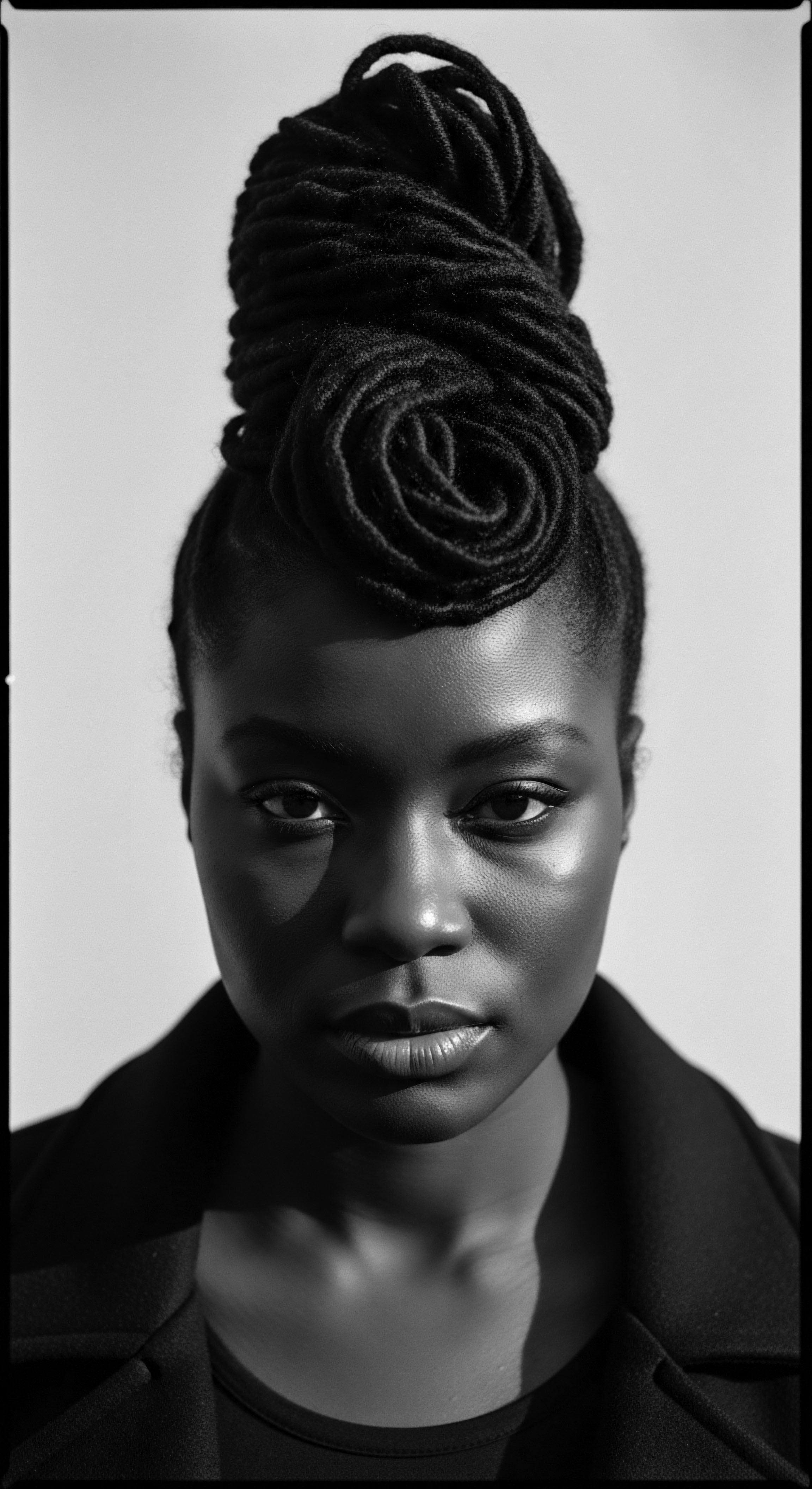
Reflection on the Heritage of Hair Care Equity
As we chart the intricate contours of Hair Care Equity, we recognize that its true meaning is not fixed but breathes with the rhythms of history and the enduring spirit of communities. This journey, from the elemental biology of a strand to the profound cultural narratives it carries, reminds us that hair is a living testament to ancestral wisdom. It is a profound connection to the earth, to community, and to self. The echoes from the source, the gentle hum of ancient practices, continue to guide our understanding, inviting us to look beyond superficial appearances to the deep roots of well-being and belonging.
The tender thread of care that winds through generations of Black and mixed-race hair traditions embodies a resilience forged in adversity. Every braid, every twist, every communal gathering around hair is a testament to an unyielding spirit, a continuous act of affirmation. It is a quiet revolution, often conducted within the sacred spaces of homes and salons, yet its impact reverberates through society, reshaping perceptions and reclaiming narratives. This heritage of care, passed down through the skillful hands of mothers and aunties, carries not only techniques but also a profound love, a fierce determination to preserve identity against all odds.
The unbound helix of textured hair, with its unique patterns and strength, whispers stories of survival and beauty. It stands as a vibrant declaration of identity, a visual language that speaks of resilience, creativity, and self-possession. The ongoing efforts towards Hair Care Equity are not merely about legal frameworks or market shifts; they are about honoring this legacy, ensuring that the next generation inherits a world where their coils and kinks are celebrated without question, where every strand finds its rightful place in the sun. This ongoing dialogue between past and present, between ancestral practice and contemporary understanding, forms the very soul of this endeavor, calling us to listen, to learn, and to tend with reverence to the hair that binds us to our heritage and propels us toward a more equitable future.

References
- Akanmori, H. (2015). Hairstyles, Traditional African. In The SAGE Encyclopedia of African Cultural Heritage in North America. SAGE Publications, Inc.
- African American Registry. (2024). Black Hair Care and Its Culture, a story .
- Byrd, A. D. & Tharps, L. L. (2002). Hair Story ❉ Untangling the Roots of Black Hair in America. St. Martin’s Press.
- Chicago Public Library. (2021). Celebrating Black Hair ❉ Books for Adults .
- Don’t touch my hair! ❉ A guide to investigating race-based hair discrimination. (2022).
- Economic Policy Institute. (2023). The CROWN Act ❉ A jewel for combating racial discrimination in the workplace and classroom .
- JSTOR Daily. (2019). How Natural Black Hair at Work Became a Civil Rights Issue .
- Khumbula. (2024). A Crowning Glory ❉ Hair as History, Identity, and Ritual .
- Odele Beauty. (2021). 6 Things Everyone Should Know About Black Hair History .
- Omotoso, S. A. (2019). Gender and Hair Politics ❉ An African Philosophical Analysis. ResearchGate.
- Oxford Academic. (2023). Hair Discrimination and the Racialization of Black Young People’s Bodies ❉ A Critical Analysis of Racism in U.K. School Settings .
- ResearchGate. (2024). The importance of hair in the identity of Black people .
- Salford Students’ Union. (2024). The Remarkable History Behind Black Hairstyles .
- Scholar Commons. (2021). Examining Afrocentricity and Identity Through the Reemergence and Expression of Natural Hair i .
- Sherrow, V. (2006). Encyclopedia of Hair ❉ A Cultural History. Greenwood Publishing Group.
- USC Dornsife. (2016). Kinky, curly hair ❉ a tool of resistance across the African diaspora .
- Walden University Research. (2025). African American Women’s Experience of Wearing Natural Textured Hair .
- WhiteLotusHairStudio. (2024). Black Hair History .
- Wikipedia. (2023). Discrimination based on hair texture in the United States .
